Wife of Confederate General Benjamin Hardin Helm
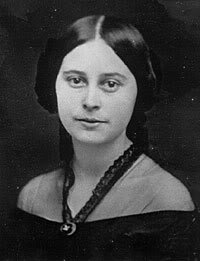 Half-sister of Mary Todd Lincoln, Emilie Todd Helm first came to the White House in December 1863, after the death of her thirty-two-year-old husband, Confederate General Benjamin Hardin Helm, in the Battle of Chickamauga. (Most of the children of their father’s second marriage sided with the Confederacy.)
Half-sister of Mary Todd Lincoln, Emilie Todd Helm first came to the White House in December 1863, after the death of her thirty-two-year-old husband, Confederate General Benjamin Hardin Helm, in the Battle of Chickamauga. (Most of the children of their father’s second marriage sided with the Confederacy.)
Emilie Todd was born November 11, 1836, daughter of Robert Smith Todd and Elizabeth Humpreys Todd of Lexington, Kentucky. She was born into a wealthy family with exceptional advantages in both education and culture, which was afforded to few ladies of her time. Emilie was 18 years younger than her half-sister Mary Todd Lincoln.
Robert Todd was a prominent Lexington banker and patriarch of a growing brood. He had seven children with his first wife, Eliza Ann Parker, one of whom was Mary Todd Lincoln. Emilie was part of his “second family,” the eight children he fathered with Elizabeth Humpreys. Most of the children from Robert Todd’s second marriage sided with the Confederacy.
In 1846, when Emilie was ten, her half-sister Mary arrived in Lexington with her husband, Abraham Lincoln, an Illinois lawyer and rising member of the Whig party. Lincoln had just been elected to the U.S. Congress, and they were on their way to Washington, DC.
Little Emilie was scared of Lincoln at first, a towering figure in a long coat and black fur cap. Lincoln had not met all of the family, so there were many introductions. As the adults chatted, Emilie hid behind her mother’s skirts. Lincoln saw her, smiled, and swept her up into his arms. “So this is little sister!” From that day on, he called her Little Sister.
Once she was grown Emilie was considered the prettiest Todd sister. She was petite, with raven-black hair and appealingly large eyes. Emilie’s beauty, poise and charm made her the ideal Southern belle.
Benjamin Hardin Helm was born June 2, 1831 in Elizabethtown, Kentucky, the son of Lucinda Barbour Hardin and John Larue Helm, two-term Governor of Kentucky. Benjamin was the first of twelve children. He attended the Kentucky Military Institute and the U.S. Military Academy at West Point, graduating ninth in a class of 42 cadets in 1851.
Helm was appointed a brevet second lieutenant in the 2nd U.S. Dragoons, but resigned his commission the following year due to illness, after serving at a cavalry school at Carlisle, Pennsylvania, and at Fort Lincoln, Texas.
Helm then studied law first at the University of Louisville where he graduated in 1853, and later at Harvard. He entered law practice in Elizabethtown before being elected to the Kentucky House of Representatives in 1855, and became the state’s attorney for the Third District of Kentucky. A year before the Civil War started, he became an assistant inspector general in the Kentucky State Guard.
Emilie Todd married Benjamin Hardin Helm in 1856, a young politician from a good family, who was then a member of the Kentucky Legislature. They had three children:
• Katherine (1857-1937), never married. Katherine became a well known artist and painted many portraits of the family and notable personalities. She painted six portraits of Mary Todd Lincoln, one of which now hangs in the White House. She was also the author of The True Story of Mary, Wife of Abraham.
• Elodie (1859-1953), married Waller Lewis, no children.
• Benjamin Hardin Helm, Jr. (1862-1946), never married.
The Helms visited Abraham and Mary Todd Lincoln in the late 1850s, and Abraham took a liking to the younger man, who was most often called Ben Hardin Helm. Despite deep political differences, the Helms had a close relationship with the Lincolns.
The Helms and the Civil War
When the southern states seceded from the Union and formed the Confederacy, Kentucky chose to remain neutral. It was a slave state, and Southern in culture, but it also had ties to the North. There was a strong Unionist sentiment in the state, thanks to the nationalist traditions of famous Kentuckians like Henry Clay. Nevertheless, some chose to offer their services to the South.
President Lincoln offered Helm an officer’s commission in the Union army, but Helm declined the post. Instead he returned to Kentucky and helped recruit the 1st Kentucky Cavalry Regiment for the Confederate Army. Helm was commissioned a colonel on October 19, 1861.
Helm served under General Simon Buckner when he occupied Bowling Green, Kentucky. Helm was promoted to Brigadier General on March 14, 1862. Posted to Vicksburg in summer 1862, he took part in Major General John C. Breckinridge‘s expedition to Baton Rouge but missed the battle because of injuries in a fall from his horse.
Emilie Todd Helm and Mary Todd Lincoln’s brothers in the Confederate Army:
• David Todd, said to be the black sheep of the family because he ran away from home as a teenager, was a Confederate officer.
• George Rogers Clark Todd, Mary Todd Lincoln’s full brother, was a skilled army surgeon, and the only child from Robert Todd’s first marriage to side with the Confederacy.
• Samuel Todd was killed at the Battle of Shiloh in April 1862.
• Alexander “Alec” Todd served at Shiloh and the first siege of Vicksburg – much of that time as an aide to General Ben Hardin Helm. He was killed by friendly fire near Baton Rouge, Louisiana, in August 1862.
The Orphan Brigade
In early 1863, General Ben Hardin Helm was given command of the First Kentucky Brigade, which was nicknamed the Orphan Brigade. This was a group of military units recruited from Kentucky, the largest Confederate unit to be recruited from Kentucky during the war. Its original commander was Major General John C. Breckinridge, former Vice President of the United States, who was enormously popular with Kentuckians.
Units of the Orphan Brigade were involved in many engagements during the war, including the Battle of Shiloh. In 1862, Breckinridge was promoted to division command and was succeeded as commander of the brigade by General Roger Hanson. At the Battle of Stones River, the brigade suffered heavy casualties in an assault on January 2, 1863, including General Hanson.
The actual origin of the moniker Orphan Brigade remains in dispute. Although the brigade historian, Ed Porter Thompson, used the term in his 1868 history of the unit, it was probably not in widespread use during the war, but became popular after the war among the veterans. These Kentucky soldiers could not return to their Union-held home state during the war, which is the most likely reason for the name.
Battle of Chickamauga
In 1863, General Helm served in the Tullahoma and Chickamauga Campaigns under Breckinridge. On September 18, 1863, during the Chickamauga Campaign, Helm’s Brigade, along with the rest of Breckinridge’s division, was near Glass’ Mill, Georgia, on the extreme left of the Confederate Army along Chickamauga Creek.
There was some light skirmishing by the infantry on the 19th, which developed into a severe artillery duel. Casualties were slight, 22 were killed or wounded. In the late afternoon, orders were received to move to the right, toward Lee and Gordon’s Mill. After a short pause near the Mill, Breckenridge moved the division still further to the right.
Early in the morning of September 20, 1863 – the second day of fighting in the Battle of Chickamauga – Breckinridge placed his men to the right of General Patrick R. Cleburne’s division and consequently became the extreme right flank of the Confederate line of battle. At 9:30 a.m. with the Kentucky Brigade forming the left, the division moved forward in search of the enemy.
General Breckinridge reported:
At the distance of 700 yards we came upon him [the enemy] in force, and the battle was opened by Helm’s brigade with great fury. The Second and Ninth Kentucky, with three companies of the 41st Alabama, encountered the left of a line of breastworks.
The Federal troops held a strong position, which was fortified with three lines of entrenchments composed of fallen timber and rocks concealed in thick undergrowth. This was one of the bloodiest encounters of the day.
But the Federal works extended only half the length of the Brigade. The regiments on the right, the 6th and 4th Kentucky and several companies from the 41st Alabama were successful and passed to the right and clear of the works. Steadily they drove the enemy back. The left-hand regiments reformed and made a second charge that drove the first line of the enemy from their entrenchments.
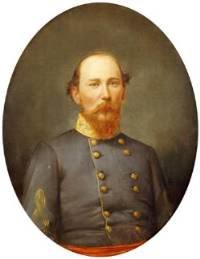 Image: General Benjamin Hardin Helm
Image: General Benjamin Hardin Helm
The advanced position could not be maintained, however, due to heavy fire from their left, and they were forced back. For the third time the Confederates advanced to the charge, under heavy fire. Soon word was received that General Helm was mortally wounded, while attempting to motivate his Kentuckians forward to assault the strong position once again.
Late in the evening, reinforced by several additional brigades, the shattered remnant of the 1st Kentucky Brigade charged once more. This time they drove the enemy from their fortifications toward the Chattanooga road taking a considerable number of prisoners. As darkness fell, a welcome halt was called to this bloody day of fighting.
General Helm had been taken to a house nearby where the yard and hallways were filled with injured soldiers. Helm was placed in a room with several other seriously wounded. Helm asked the doctor if there was any hope and was told there was none. As the sound of battle faded he roused himself to consciousness and asked what the outcome was. On being told that the army had triumphed he uttered, in a painful whisper, “Victory.”
Near midnight General Ben Hardin Helm died at the age of 32. The Orphan Brigade had lost another commander.
As the war progressed, Emilie had followed her husband south. In Chattanooga, she organized better care for wounded soldiers. She was in Alabama in September 1863 when she got word that her husband had been killed.
Four brigade commanders were lost on each side at the Battle of Chickamauga, either killed or mortally wounded. The government has erected monuments to these officers on the spots where each one fell, without making any distinction between those who fell on the Northern or on the Southern side.
General Helm’s sad passing was felt not only throughout Kentucky and the South, but sadness also settled over the White House in Washington. When President Lincoln learned of his brother-in-law’s death in battle, he was deeply moved and told one member of his cabinet that he felt like David in the Bible when he learned that his son Absalom had been killed.
Abraham and Mary Todd Lincoln went into private mourning, her niece recalling: “She knew that a single tear shed for a dead enemy would bring torrents of scorn and bitter abuse on both her husband and herself.”
Rebel in the White House
Emilie Todd Helm accepted the offer of Mary and Abraham Lincoln to visit them in Washington in late 1863. Emilie passed through the Union lines in December 1863, accompanied by her daughter Katherine. They were brought to the White House under the president’s direct orders after Emilie had declined to attest to her loyalty to the Union when she was detained at Fort Monroe, Virginia.
Emilie noted in her diary:
Mr. Lincoln and my sister met me with the warmest affection, we were all too grief-stricken at first for speech. I have lost my husband, they have lost their fine little son Willie. Mary and I have lost three brothers in the Confederate service. We could only embrace each other in silence and tears. Our tears gathered silently and fell unheeded as with choking voices we tried to talk of immaterial things.
There were lighter moments as well. Emilie’s daughter Katherine and Lincoln’s son Tad argued over who was president – Abraham Lincoln or Jefferson Davis.
The Lincolns had a special fondness for Emilie. While in Washington, though she kept a very low public profile, Emilie was labeled the Rebel in the White House. Her stay caused a furor in the Northern press.
President Lincoln was very solicitous and defended her presence against political attacks. General Daniel Sickles baited Emilie by stating, “We have whipped the rebels at Chattanooga, and I hear the scoundrels ran liked scared rabbits.” Emily responded, “It was the example you set them at Bull Run and Manassas.”
When Sickles, who was recovering from a wound received at Gettysburg five months earlier, protested Emilie’s presence at the White House, the President replied, “General Sickles, my wife and I are in the habit of choosing our own guests. We do not need from our friends either advice or assistance in the matter.” But Emilie soon left Washington.
Using the word Confederate, which he so rarely wrote or spoke, President Lincoln wrote the following pass:
To whom it may concern: It is my wish that Mrs. Emilie T. Helm (widow of the late General B. H. Helm, who fell in the Confederate service), now returning to Kentucky, may have protection of person and property, except as to slaves, of which I say nothing.
A. Lincoln
Emilie found the city of Lexington, Kentucky, under Federal martial law, and very hostile to those who would not take an oath of loyalty to the Union. Shortly thereafter, Emilie wrote the President, asking him to send clothing to Confederate prisoners at Camp Douglas outside Chicago. She concluded the letter: “I hope I am not intruding too much upon your kindness and will try not to overstep the limits that I should keep.”
Later, when Emilie was seeking permission to travel into the Confederacy to sell some cotton she had acquired, Lincoln declined. He had already gone out on a limb by giving her an amnesty paper without her taking a loyalty oath.
In August 1864, Lincoln wrote the following order to the Union military commander of Kentucky:
War Department, Washington,
August 8, 1864 to Major General Burbridge, Lexington, Ky.:
Last December Mrs. Emily T. Helm, half-sister of Mrs. Lincoln, and widow of the rebel General Ben Hardin Helm, stopped here on her way from Georgia to Kentucky, and I gave her a paper, as I remember, to protect her against the mere fact of her being General Helm’s widow.
I hear a rumor today that you recently sought to arrest her, but was prevented by her presenting the paper from me. I do not intend to protect her against the consequences of disloyal words or acts, spoken or done by her since her return to Kentucky, and if the paper given her by me can be construed to give her protection for such words or acts, it is hereby revoked pro tanto. Deal with her for current conduct just as you would with any other.
A. Lincoln
That did not stop Emilie from again requesting a pass to sell her cotton in November 1864, when she wrote to President Lincoln:
I have been a quiet citizen and request only the right which humanity and justice always gives to widows and orphans. I also would remind you that your minie bullets have made us what we are.
After this incident, Abraham and Mary Todd Lincoln would not communicate with her sister, and they never saw each other again.
Emilie Todd Helm never remarried and wore mourning clothes for the remainder of her life. After the war, she and her children went from Lexington to Elizabethtown, Kentucky, and finally to support her family, moved to Madison, Indiana, where she gave piano lessons.
Emilie was active in recording Todd Family history, and in the local chapter of the United Daughters of the Confederacy, which was named for General Helm. She also took part in many of the military reunions and was named Mother of the Orphan Brigade by the former soldiers of the First Kentucky Regiment.
She became close with her nephew, Robert Todd Lincoln, son of Abraham and Mary Todd Lincoln. In 1881, he helped her obtain an appointment as postmistress of Elizabethtown, Kentucky. She and her family resided in a house on West Poplar Street while she served in that position from 1883 to 1895.
As a kindness to her nephew, Emilie Todd Helm, along with daughters Katherine and Elodie, unveiled a statue of President Lincoln on the town square in Hodgenville, Kentucky, birthplace of the sixteenth President of the United States.
On September 17, 1884, the body of Brigadier General Ben Harden Helm was exhumed from its grave in Georgia to be reburied in his native Kentucky soil. Soldiers from both the Orphan Brigade and the First Kentucky Cavalry accompanied it on the journey. Helm was re-interred at Helm Place in Elizabethtown, Kentucky, where he once lived. Both Helm and his father, former Kentucky governor John LaRue Helm, are buried there in the family cemetery.
In 1912, Benjamin Hardin Helm Jr., fulfilling a pledge to bring his mother home to Lexington, bought a farm on land that had once been owned by General Levi Todd, Emilie’s great gandfather. There she lived out her days.
Emilie Todd Helm died on February 20, 1930, at the age of 93. She was buried in the Todd plot at the Lexington Cemetery.
SOURCES
Emilie Helm
Ben Hardin Helm
Emilie Todd Helm
Triumph at Chickamauga
Kentucky’s Abraham Lincoln
Wikipedia: Benjamin Hardin Helm
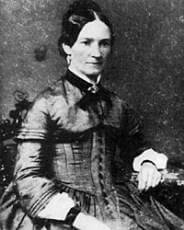
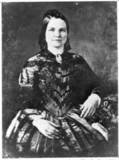
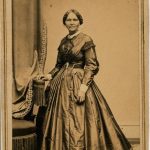
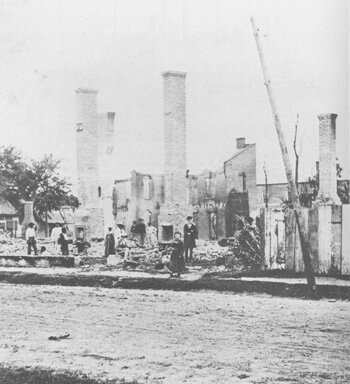

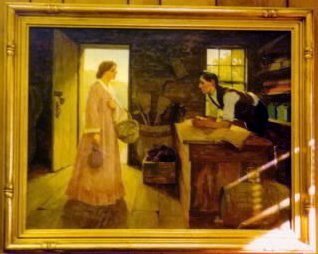
Kentucky was a southern state and had ties with the north just as any other state in the South. Cultural ties?